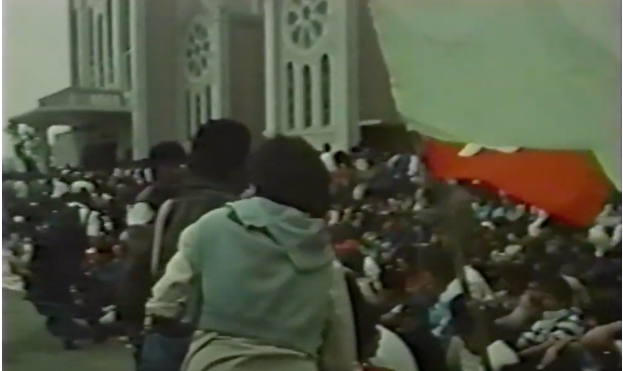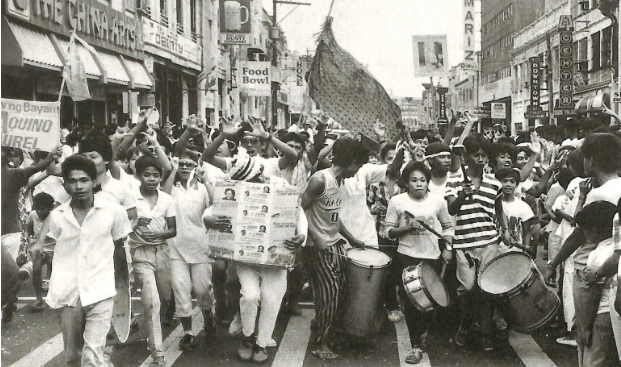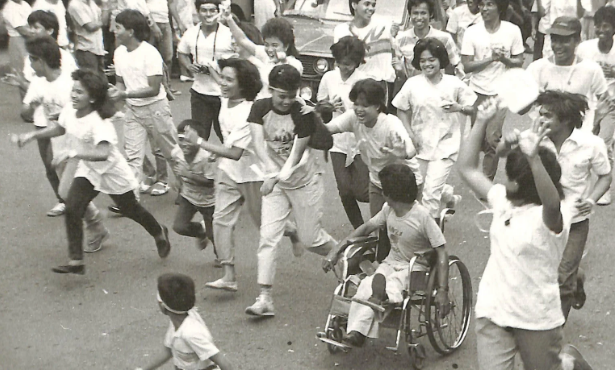

Marking its 37th year since the Philippines obtained democracy after 21 years of dictatorship under former President Ferdinand Marcos Sr.'s administration, the EDSA People Power Revolution was a form of protest with no touch of violence back in February 22 to 25, 1986.
Those four days were some of the greatest moments in Philippine history as Filipinos showed their courage and stood up against a dictator, fighting for the country's freedom.
This article will bring back the important numbers recorded during the EDSA revolution, including the number of attendees, violations of human rights, and nationwide participation in the said protest.
Before the revolution
On February 15, 1986, the Batasang Pambansa officially declared Marcos Sr. the winner of the presidential election. A total of 50 members of parliament left the chamber in protest of the decision.
After the day of the declaration, former president Corazon C. Aquino held a "victory rally," encouraging people to engage in civil disobedience by striking and boycotting businesses controlled by Marcos and his allies, including banks, media outlets, and other businesses.
On the morning of February 22, 1986, Juan Ponce Enrile, the defense minister during that time, was putting the finishing touches on a coup that Col. Gregorio "Gringo" Honasan would lead.
Enrile was to take charge of a ruling junta and would launch an attack on Malacañang, however, a few hours later, it became painfully obvious that Marcos had learned about their scheme and that AFP Chief of Staff General Fabian Ver had set up his troops to defend against the onslaught.
Enrile requested assistance from AFP Deputy Chief of Staff General Fidel Ramos, who complied, and two of them traveled to Camp Aguinaldo, where they made their official announcement of leaving the Marcos administration a short time later.
During the EDSA People Power Revolution
AFP Chief General Fabian Ver threatened to annihilate all who had revolted against Marcos, preparing a total of 250,000 military soldiers, which included the combined forces of the army, navy, and air force.
This was done when Enrile and former president Fidel V. Ramos called for a press conference to announce their resignations from Marcos' cabinet and the withdrawal of their support for the dictator.
Enrile and Ramos, both backed by 300 soldiers, were camped out across Epifanio de los Santos Avenue (EDSA) from one another, bracing for the worst as Enrile crossed it to join forces with Ramos.
In order to rally support for Enrile and Ramos, which Butz Aquino, Ninoy Aquino's brother, had requested, Manila Archbishop Cardinal Sin used Radio Veritas to reach out to the few people who were in favor of the two.
Despite the weak first response, more people rushed to the streets as Cardinal Sin urged them to visit the Camps.
On February 23, at exactly 12:00 midnight, 10,000 people had gathered at Cubao and were beginning their march to EDSA, which increased to 20,000 by the time they arrived at Camp Aguinaldo.
The number of people reached hundreds of thousands over the course of the following two days, prompting the formation of a human wall to guard the two military camps.
Nuns were presenting roses to troops who had their rifles pointed at them, protesters were blocking the way of tanks, and helicopters were ready to launch an attack on the throng.
Radio Broadcast of the Philippine People Power Revolution
The People Power Revolution — a peaceful overthrow of an entrenched dictatorship by a spontaneous public uprising, documented and influenced by the radio of the 20th century — may have been a singular political event that shook the world.
A nation and its people at a pivotal point in their history are unvarnished and chronicled in the uninterrupted radio record from five radio stations that lasted for four days in 1986.
The incident will always serve as a model for the peaceful handling of major national crises as the entire globe read, watched, and listened.
The Epifanio de los Santos Avenue (EDSA) in Central Manila was completely taken over by the influx of hundreds of thousands of people, who were actively encouraged to remain unarmed, bring statues of the Blessed Virgin Mary and flowers, and refrain from violence toward the armed forces of the Marcos Regime by nonstop radio broadcasts from Radio Veritas, the Philippines' Catholic Broadcasting Service.
Authorities demolished Radio Veritas' transmitting facilities on February 23rd, but another radio station, Radio Bandido ("Bandit Radio"), quickly stepped in to provide support, continuing to speak to street dwellers in the same voice and fashion as Radio Veritas had.
A group of Radio Veritas broadcasters took control of the government-run Voice of the Philippines radio station on February 24 and began operating the station in the same manner.
Similar messages were also played on DZRH, a private radio station in Manila run by Manila Broadcasting Company, and the local armed forces in Manila came out in support of the demonstrators on February 24.
People Power across regions
The first People Power Revolution took place in the Philippines in 1986 along one of the nation's longest highways, EDSA, making it a significant historical location for the movement that overthrew the late tyrant without spilling even a drop of blood.
The People Power Revolution, however, also happened in four other regions besides Metro Manila.
Northern Luzon
Baguio City's opposition to the Marcos administration was captured through the eyes of a renowned director, Kidlat Tahimik, giving viewers a close-up and immersive view of the residents before, during, and after the revolt.
The Baguio Cathedral grounds became the center of the city's militant operations under the direction of the Cory Aquino for President Movement (CAPM).

Western Visayas
The memory of former Antique Governor Evelio Javier, an outspoken opponent of the Marcos regime, preserves the history of the People Power Revolution of 1986 in Region VI.
On February 11, just a few days before the countrywide uprising, he was slain in broad daylight on the grounds of their provincial capitol.
His death, according to local historians, inspired other Ilonggos to take action and support the cause.
The biggest protest hubs in the area were the cities of Iloilo and Bacolod.

Central Visayas
The events leading up to the 1986 revolution also involved Cebu City, which was very important. The late President Corazon Aquino fled to the city and sought refuge at the Carmelite Monastery on February 22, following the hotly fought emergency elections that resulted in Marcos being declared the victor.

Southern Mindanao
The rallies against Marcos in Davao City were led by none other than former president Rodrigo Duterte's mother.
Prior to the revolution of 1986, Soledad Duterte, often referred to as "Nanay Soling" in her own country, was the leader of the "Yellow Friday Movement."
When Soling refused to appoint former President Cory to be the officer-in-charge vice mayor and offered it to her son instead, it had a significant impact on the anti-Marcos movement and shifted Rodrigo's political trajectory.





